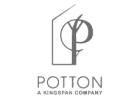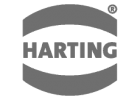Rotogravure (Roto or Gravure for short) is a type of intaglio printing process, which involves engraving the image onto an image carrier. In gravure printing, the image is engraved onto a cylinder because, like offset printing and flexography, it uses a rotary printing press. Once a staple of newspaper photo features, the rotogravure process is still used for commercial printing of magazines, postcards, and corrugated (cardboard) product packaging. Ideally suited for longer runs requiring consistent high quality.
Process
While the press is in operation, the engraved cylinder is partially immersed in the ink fountain, filling the recessed cells. As the cylinder rotates, it draws ink out of the fountain with it. Acting as a squeegee, a blade scrapes the cylinder before it makes contact with the paper, removing excess ink from the non-printing (non-recessed) areas and leaving in the cells the right amount of ink required: this tool is located quite close to the paper so that the ink left in the cells does not have enough time to dry. Next, the paper gets sandwiched between the impression roller and the gravure cylinder: this is where the ink gets transferred from the recessed cells to the paper. The purpose of the impression roller is to apply force, pressing the paper onto the gravure cylinder, ensuring even and maximum coverage of the ink. The capillary action of the substrate and the pressure from impression rollers force the ink out of the cell cavity and transfer it to the paper. Then the paper goes through a dryer because it must be completely dry before going through the next color unit and absorbing another coat of ink.
Features
Since the Gravure printing process requires the creation of one cylinder for each colour of the final image, it is expensive for short runs and best suited for high volume printing. Typical uses include long-run magazines in excess of 1 million copies, mail order catalogs, consumer packaging, Sunday newspaper ad inserts, wallpaper and laminates for furniture where quality and consistency are desired. Another application area of gravure printing is in the flexible-packaging sector. A wide range of substrates such as polyethylene, polypropylene, polyester, BOPP, etc. can be printed in the gravure press. Gravure printing is one of the common processes used in the converting industry.
Here’s a little link to the BBC Learning zone which shows the processes involved in Gravure printing – in this case for Magazines.
Printing magazines































































